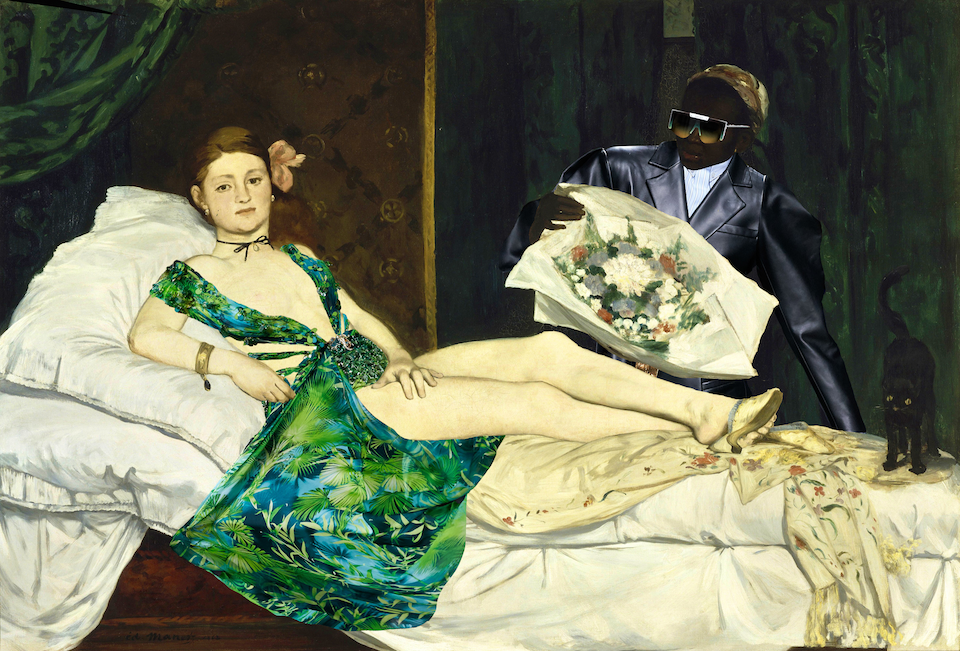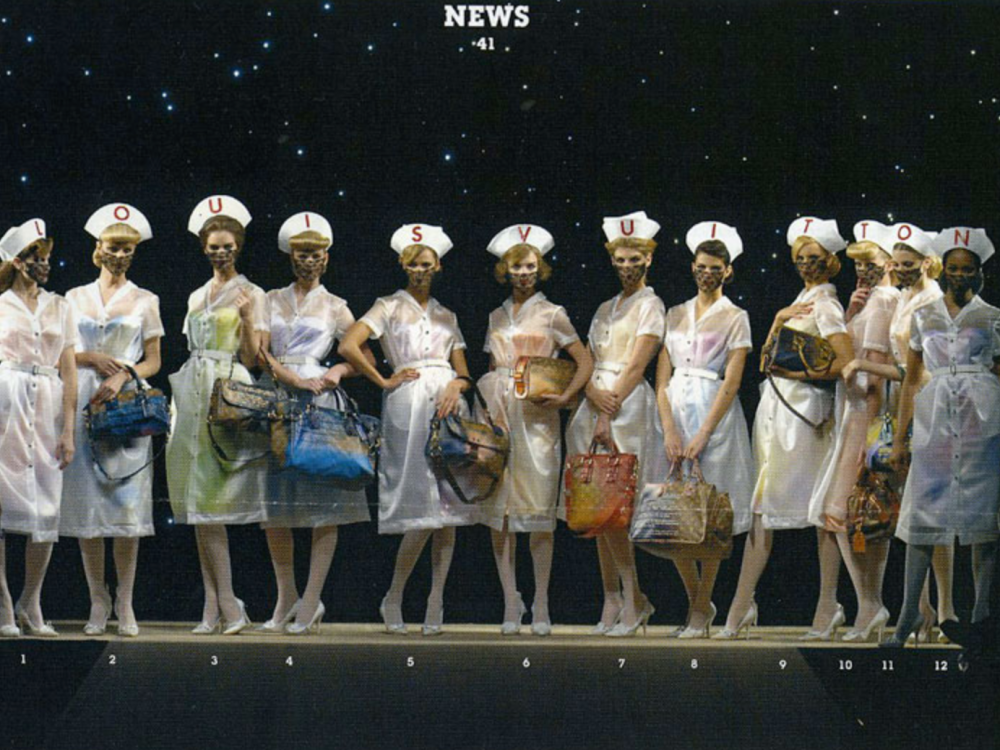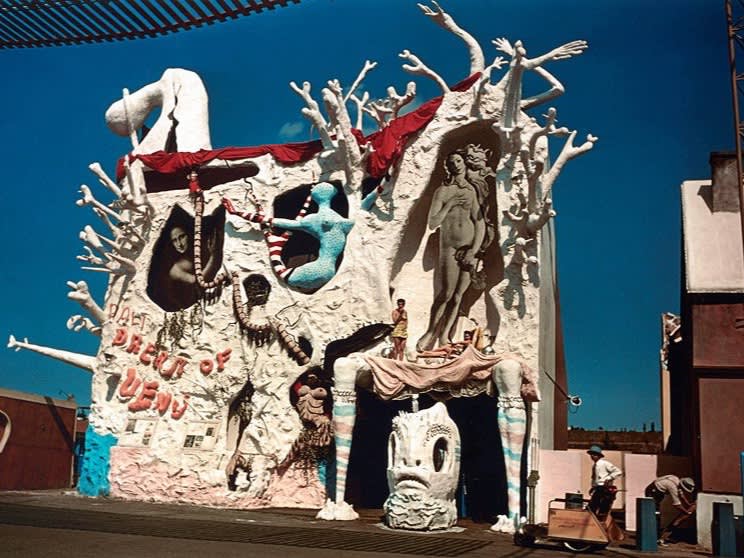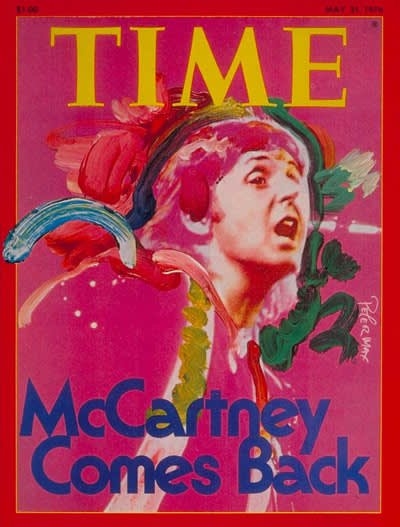
TIME Magazine
Paul McCartney Cover, May 1976
The history of magazines is intrinsically tied to the worlds of art, fashion, media, and popular culture. Magazines are a medium of expression, both visually and literarily, which permeate a wide range of categories – from mass celebrity culture to underground countercultures, from the high fashion elite to grass root movements. While the magazine itself is a historic contradiction — both constantly recycled for new material and everlastingly important even as culture evolves - print is still not dead, and if history is any indication, it very well may never be.
Often categorized by the audiences in which they target, there are three primary types of magazines: those for the consumer, those for the trade, and in-house publications. While some have proven more permanent than others, they all have an important place in the history of the medium.
Magazines are most clearly suited to the worlds of art and fashion; their glossy, colorized pages lend themselves to large-format photography, graphic design, literature, and investigative reporting. As such, magazines created by and for artists have beautifully captured the era of art in which they were made.

Life
Marilyn Monroe, April 1952
Andy Warhol’s iconic ‘Interview’ Magazine, which ran from 1969 to 2018 – and has since re-launched – will forever be a symbol of downtown New York, mass media and celebrity culture. Stars such as Cher, Mick Jagger, and Stevie Wonder have all graced Interview’s polarizing covers, whose splashy visual style made waves of its own beginning in the late 1960s. From Madonna’s infamous crotch grab in 1990 to Marc Jacobs’ 2008 cover depicting the designer dressed as a Warhol-look-alike, each cover has perfectly exemplified the late Pop artist’s everlasting legacy. Interview is widely celebrated by creators and celebrities alike, remaining an American cultural institution whose enduring power will never die, even at the brink of near to extinction.
Interview Magazine
Starring Cher, December 1974
Interview Magazine
Starring Grace Jones, October 1984
Interview Magazine
Starring Madonna, June 1990
Interview Magazine
Starring Marc Jacobs, June 2008
While perhaps the most famous of such examples, Warhol’s Interview was far from the first artist-founded, artist-run publication. French painter Francis Picabia was involved with three magazines between 1915 and 1924: 291, 391, and Littérature. Founded by photographer Alfred Stieglitz, 291 was a literary and visual arts magazine with cover art and contributions by Picabia, while Picabia himself founded 391, also creating unique covers for each issue. Likewise, Littérature, a surrealist literary magazine founded by André Breton and ran from 1919 to 1924, included covers with drawings by Francis Picabia featuring religious imagery, eroticism, and games of chance as inspiration.
Similarly, Minotaure, a French surrealist magazine edited by Breton and published between 1933 and 1939, was unlike any other surrealist publication, aiming to attract a more conventional crowd through its articles on architecture and mainstream art. With cover art by Pablo Picasso, Salvador Dali, Marcel Duchamp, Rene Magritte, and Diego Rivera, Minotaure utilized the power of imagery to lure readers in to the more complex and avant-garde world of surrealism.
291 Magazine
Cover by Francis Picabia
391 Magazine
Cover by Francis Picabia
Littérature
Cover by Francis Picabia
Minotaure
Cover by Pablo Picasso
Minotaure
Cover by Salvador Dalí
Minotaure
Cover by Marcel Duchamp
Minotaure
Cover by René Magritte
Minotaure
Cover by Diego Rivera
Minotaure
Cover by Joan Miró
In 1968, artists William Copley and Dimitri Petrov introduced S.M.S. Portfolios – an acronym for ‘Shit Must Stop’ – that published packages of ephemeral objects collected by artists. Varying in focus and often including works of Dada, Surrealism, and Pop Art, the magazine aimed to bring together artists as a means of protesting the establishment’s authority over the value of art. Without divisive factors, artists of varying skills and styles could come together on a single page. Those involved with S.M.S. Portfolios included Marcel Duchamp, Merit Oppenheim, Man Ray, Roy Lichtenstein, Ray Johnson, John Cage, Yoko Ono, and many others.

S.M.S.
William Copley and Dimitri Petrov

S.M.S.
William Copley and Dimitri Petrov
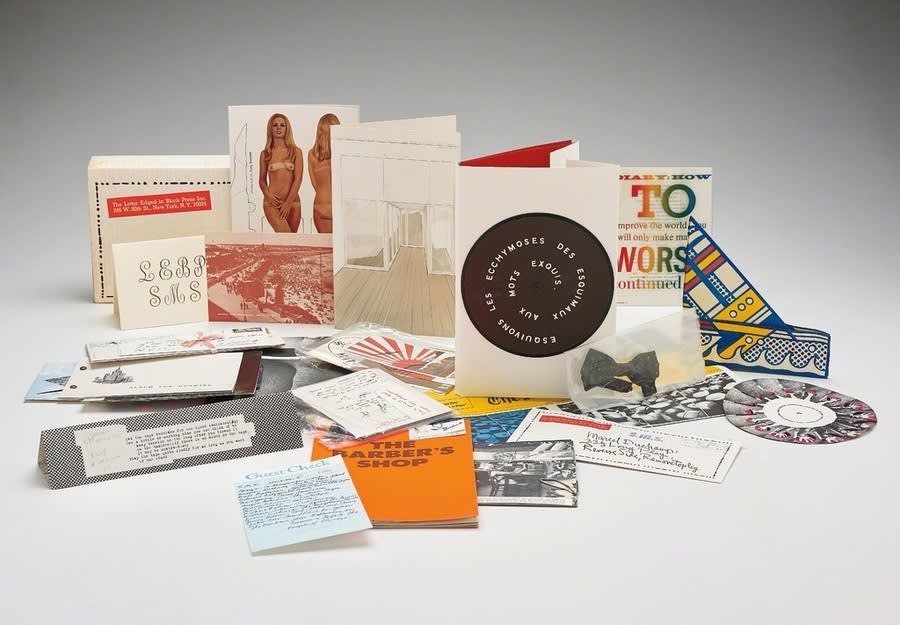
S.M.S.
William Copley and Dimitri Petrov

S.M.S.
William Copley and Dimitri Petrov
Just as art has evolved significantly over the past century, so have artist publications. Today, homemade, self-released magazines known as ‘Zines,’ are considered the metaphorical glue holding counterculture movements together. Circulated in small runs and favored for their handmade aesthetic, countless artists have taken to this format over the large, glossy publications of the past. Raymond Pettibon, for example, has depicted his stylized ink drawings in zines alongside complimentary text, while artist Tom Sachs has been creating these miniature booklets for decades, often featuring a variety of images, lists, drawings, photographs and text, with titles such as “Barbie Slave Ship,” “Nuggets” and “NASA Technical Notes”.
Raymond Pettibon
The Navigator's Wives
Raymond Pettibon
A Can At The Crossroads
Tom Sachs
White
Tom Sachs
Drawings
Tom Sachs
Nasa Technical Notes
Musicians, too, have favored zines over more traditional monthly magazines such as Rolling Stone. Kim Gordon of the band Sonic Youth has put out a variety of these pamphlets; Gordon’s strong connection to music and cultural movements of the 1980s make her zines an important piece of contextual history. While in more recent years, singer Frank Ocean created a publication that straddles the line of zine and magazine, titled ‘Boys Don’t Cry’. With limited distribution in a handful of bodegas throughout major cities like New York and Los Angeles, the publication adheres to many aspects of zine culture, however its unchartered star power and contributions by Kanye West, Tom Sachs, and countless others, prompts comparison to many major publications.
Kim Gordon
Stairway (Is It My Body?)
Kim Gordon
Stairway (Is It My Body?)
Frank Ocean
Boys Don't Cry
Frank Ocean
Boys Don't Cry
Perhaps the most renowned consumer-oriented magazines are those surrounding fashion. From Vogue and Harper’s Bazaar, to Cosmopolitan and W, each publication seeks to imbue a unique editorial perspective to engage with a powerful, increasingly discerning audience. Still, as famous as these titles may be, many avid, fashion-obsessed readers are all but unfamiliar with the magazines created BY fashion designers and brands themselves.
From 1989 to 1991, Comme des Garçons published Six, a magazine that, much like designer Rei Kawakubo’s collections, focuses on the unique and otherworldly, with particular attention to the theme of the sixth sense. Edited by Atsuko Kozasu with art direction by graphic designer Tsuguya Inoue, the magazine’s large format and unstapled pages – simulating a newspaper – contained mostly artistic images featuring Comme des Garçons clothing. In many respects, Six became a supplemental text to Kawakubo’s designs, allowing viewers to dig deeper into each collection.
Likewise, Swedish fashion house Acne Studios launched ‘Acne Paper’ in 2005, which quickly gained traction as an exciting new face in the print industry. With large-scale, matte pages and a title aligned with the bottom of its cover, Acne Paper’s trademark style pulls away from the glossy publications of the past. Each issue surrounds a universal theme explored through unexpected narratives, while its distinguished contributors, modern format, and thought-provoking articles have earned Acne Paper countless accolades and a devoted following.
Comme des Garçons
Six Magazine
Comme des Garçons
Six Magazine
Acne
Acne Paper
Acne
Acne Paper
Acne
Acne Paper
Meanwhile, much like William Copley’s ‘S.M.S. Portfolios’, ‘A’ Magazine is a Belgian publication curated by a new designer or artist each issue. This untraditional editorial format provides a platform for fashion designers to thoughtfully present their personal brands to the public. Past curators have included Simone Rocha, Kim Jones, Jun Takahashi, Alessandro Michele, and famously press-shy, Martin Margiela.
The role of a magazine to create, label, and empower specific cultural movements can be traced through the historical importance of magazine covers themselves. A cover’s purpose is to serve as both a work of art and an object of endless desire, a snapshot of the publication’s contents, yet a powerful enough visual that when seen in a sea of likeminded titles, it screams, “Me! Pick Me!” As such, landing a magazine cover has long been considered a career-defining moment for artists, photographers, fashion designers and celebrities, alike.
The New Yorker is a primary example of this ideology, whose highly coveted cover spots are considered one of the greatest achievements in visual art and graphic design. Perhaps the most revered individual in the history of cover art is American art director George Lois, who changed the face of Esquire Magazine with his dozens of groundbreaking designs between 1962 and 1972. Favoring stripped down, concise imagery accompanied by minimal text, Lois created some of the most powerful, evocative, and even controversial magazine covers in history; so much so that in 2008 the Museum of Modern Art exhibited 32 of Louis’ most iconic Esquire covers.
Esquire
Art Direction by George Lois
Esquire
Art Direction by George Lois
Esquire
Art Direction by George Lois
Esquire
Art Direction by George Lois
Esquire
Art Direction by George Lois
The New Yorker
View of the World from 9th Avenue, by Saul Steinberg, March 29, 1976
The New Yorker
The Kiss, by Art Spiegelman, February 15, 1993
A MAGAZINE
Kim Jones
A MAGAZINE
Jun Takahashi
A MAGAZINE
Alessandro Michele
A MAGAZINE
Maison Martin Margiela
A MAGAZINE
Simone Rocha
Likewise, in 1940 Austrian graphic designer Herbert Bayer created a cover for Harper’s Bazaar’s August issue featuring a repeating motif of a female face with alternating lip colors. Bayer’s iconic graphic embodied the creative tenants – color and repetition – that later came to define Pop art, a style favored by publications ever since. Consider it no surprise that Pop art’s ceremonial figurehead, Andy Warhol, created a number of magazine covers throughout his career, including a portrait of Michael Jackson for Time Magazine in 1984, a portrait of Princess Caroline, daughter of Grace Kelly, for Vogue Paris, also in 1984, and a 1987 self-portrait for New York Magazine, depicting the artist in his trademark silver wig paired with a classic plaid button-down.
Warhol’s 1984 Vogue cover was merely one of many such examples in which the historic magazine has employed an artist to design an issue's principal image. Over the years, Vogue has lent its covers to a multitude of artists, including Ethel Wright, Eduardo Garcia Benito, George Lepape, Salvador Dali, Rene Gruau, Joan Miro, and, most recently, John Currin.
Harpers Bazaar
Cover by Herbert Bayer, August 1940
Time Magazine
Michael Jackson Cover by Andy Warhol, March 1984
Vogue Paris
Princess Caroline (daughter of Grace Kelly) Cover by Andy Warhol, December/January 1984
New York Magazine
Andy Warhol's self-portrait cover, 1987
Vogue Magazine
Cover by Ethel Wright, November 1902
Vogue Magazine
Cover by Eduardo García Benito, September 1926
Vogue Magazine
George Lepape, February 1929
Vogue Magazine
Cover by Salvador Dalí, June 1939
Vogue Magazine
Cover by Salvador Dalí, April 1944
Vogue Magazine
Cover by Salvador Dalí, December 1946
Vogue Magazine
Cover by Salvador Dalí, December 1971
Vogue Magazine
Cover by René Gruau, March 1956
Vogue Magazine
Cover by René Gruau, June/July 1985
Vogue Magazine
Cover by Joan Miró, December 1979
Vogue Magazine
Cover by John Currin, September 2017
With the ever-changing role of magazines in contemporary society, it’s hard to imagine what position traditional media will play in five, ten and twenty years. Nonetheless, one thing is for certain, magazines have historically acted as time capsules, preserving public memory for future generations. Without them, culture would not be where it is today.

